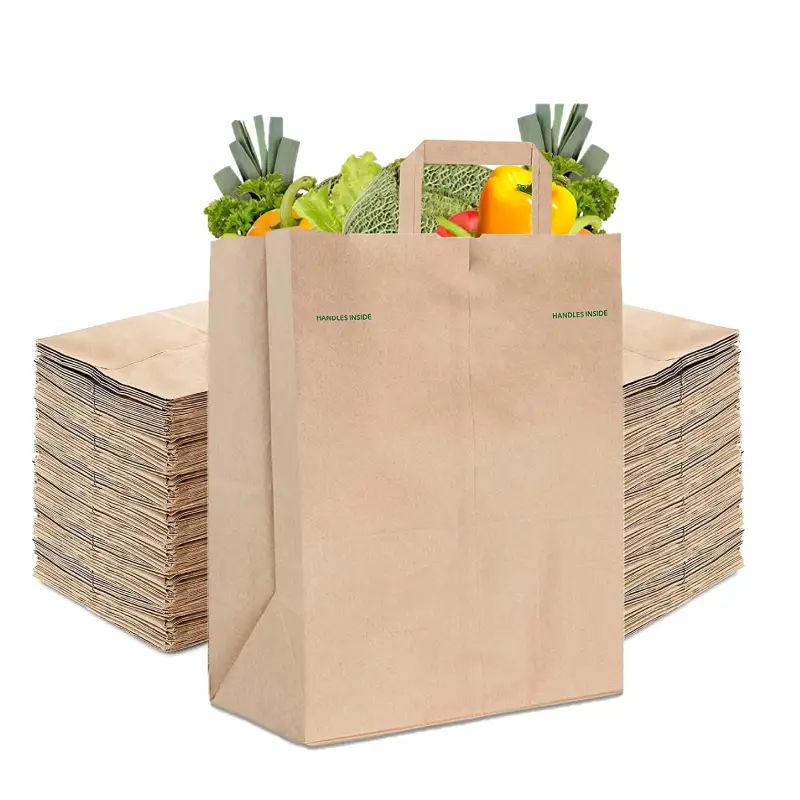Kraft paper bags are one of the most versatile and eco-friendly packaging options available. These bags are made from kraft paper, which is known for its strength, durability, and sustainability. Kraft paper bags are used in various industries, including retail, gifting, food service, and more.
Today, we will discuss what kraft paper bags are, their types, how they are made, how to print on them, how to seal them, and their recyclability.
Additionally, we will answer some frequently asked questions about kraft paper bags to give you a complete understanding of this popular packaging option.
What is a Kraft Paper Bag?
A kraft paper bag is a sturdy, brown or white paper bag made from kraft paper. Kraft paper is produced by a chemical process called the kraft process, which gives the paper its high strength.
These bags are commonly used for carrying items, and they are favored for their eco-friendly nature, as they are biodegradable and recyclable.
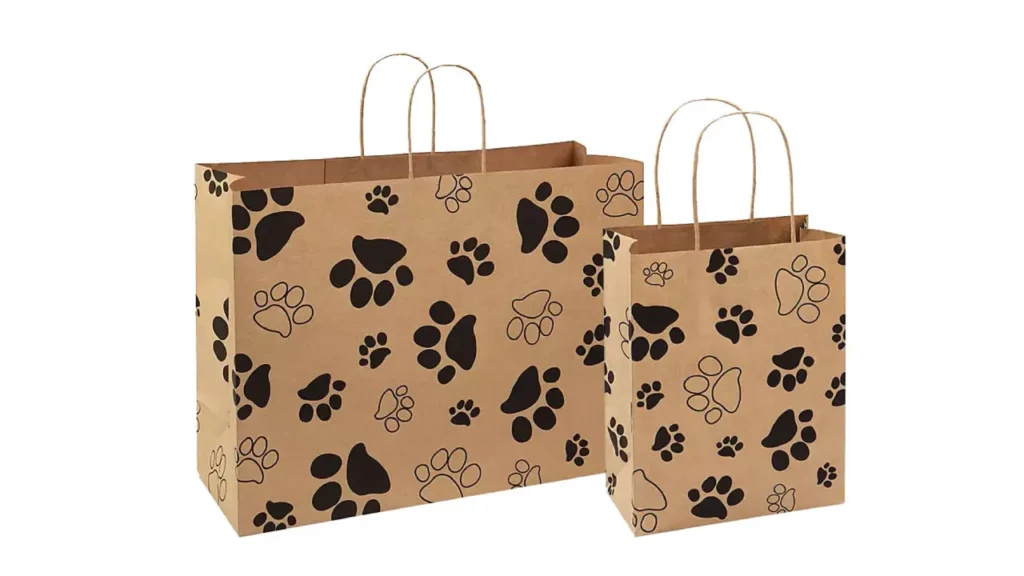
Key Features of Kraft Paper Bags:
- Durability: Kraft paper is strong and tear-resistant, making it suitable for carrying heavier items compared to standard paper bags.
- Eco-Friendly: Being biodegradable and recyclable, kraft paper bags are an environmentally responsible alternative to plastic bags.
- Customizable: These bags can be printed with logos, designs, and messages, making them an ideal choice for branding.
- Natural Look: The brown or white texture of kraft paper gives the bags a rustic or sophisticated appearance, depending on the design.
- Versatility: Kraft paper bags can be used for a variety of applications, including retail, food packaging, gifts, and more.
Applications of Kraft Paper Bags
Kraft paper bags are used in numerous industries due to their versatility and eco-friendly benefits. Here are some common applications:
- Retail Packaging: Many stores opt for kraft paper shopping bags as a sustainable alternative to plastic bags. They are used to carry clothing, groceries, and other products.
- Gift Packaging: Kraft paper gift bags are a popular choice for presenting presents. Their rustic charm makes them suitable for all kinds of gift-giving occasions, from birthdays to weddings.
- Food Packaging: Due to their strength and resistance to oils, kraft paper bags are often used in the food industry for packaging take-out orders, baked goods, or dry food items.
- Custom Branding: Businesses use kraft paper bags for their packaging needs to create an eco-friendly brand image. These bags are often printed with the company logo and other branding elements.
- Waste Disposal: Some kraft paper bags, especially kraft paper bags for yard waste, are designed for outdoor use to dispose of leaves, grass clippings, and other organic matter.
Types of Kraft Paper Bags
Kraft paper bags come in a wide variety of designs and sizes, each suited for different uses. Here’s an overview of the most common types:
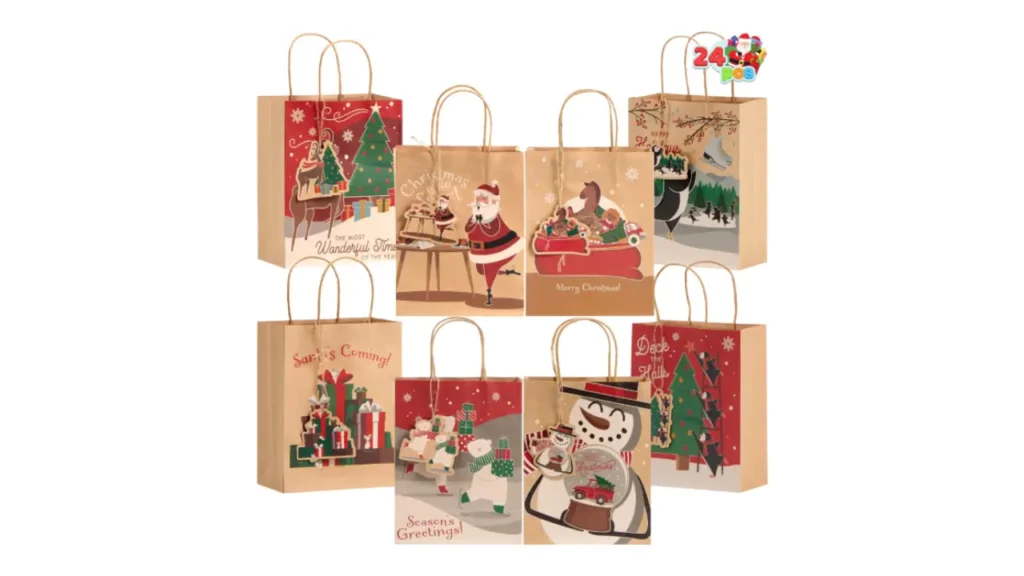
- Kraft Paper Gift Bags: These bags are often used for packaging gifts and are available in various sizes, styles, and colors. They typically feature handles and can be adorned with ribbons, tags, and other decorative elements.
- Kraft Paper Bags with Handles: These bags come with either twisted or rope handles, making them sturdy enough to carry heavier items. They are commonly used in retail and food service.
- Brown Kraft Paper Bags: The classic kraft paper bag, usually brown in color, is the most widely used in retail stores, supermarkets, and restaurants. It offers a natural look that suits many businesses aiming for an eco-friendly image.
- Kraft Paper Shopping Bags: These bags are larger and typically used for carrying products in grocery stores or clothing stores. They are a durable and environmentally-friendly alternative to plastic shopping bags.
- Small Kraft Paper Bags: Ideal for packaging small items like jewelry, cosmetics, or party favors, these bags are compact and can be personalized with designs or logos.
- Black Kraft Paper Bags: Made from black kraft paper, these bags offer a more upscale and modern appearance. They are often used for high-end retail packaging, events, and gift bags.
We also have other types of products, summarized in a table for your reference.
| Type | Description |
| Kraft Paper Treat Bags | Bags for packaging treats like candy, cookies, and baked goods. |
| Large Kraft Paper Bags | Extra-large bags for bulkier items, often used in heavy-duty packaging. |
| White Kraft Paper Bags | Sleek white bags, ideal for high-end retail or gourmet food packaging. |
| Kraft Paper Wine Bags | Specifically designed for packaging wine bottles, often with a handle. |
| Flat Bottom Kraft Paper Bags | Bags with a flat bottom that stand upright, commonly used for food packaging. |
| Laminated Kraft Paper Bags | Enhanced with a plastic coating for increased durability and moisture resistance. |
| Multiwall Kraft Paper Bags | Made with multiple layers for heavy-duty packaging, often for bulk goods. |
| Natural Kraft Paper Bags | Made from 100% natural kraft paper for an organic, rustic look. |
| Resealable Kraft Paper Bags | Feature:s resealable closures for keeping products sealed and fresh. |
| Washable Kraft Paper Bags | Can be washed and reused, offering a sustainable, long-lasting alternative. |
How to Make a Kraft Paper Bag?
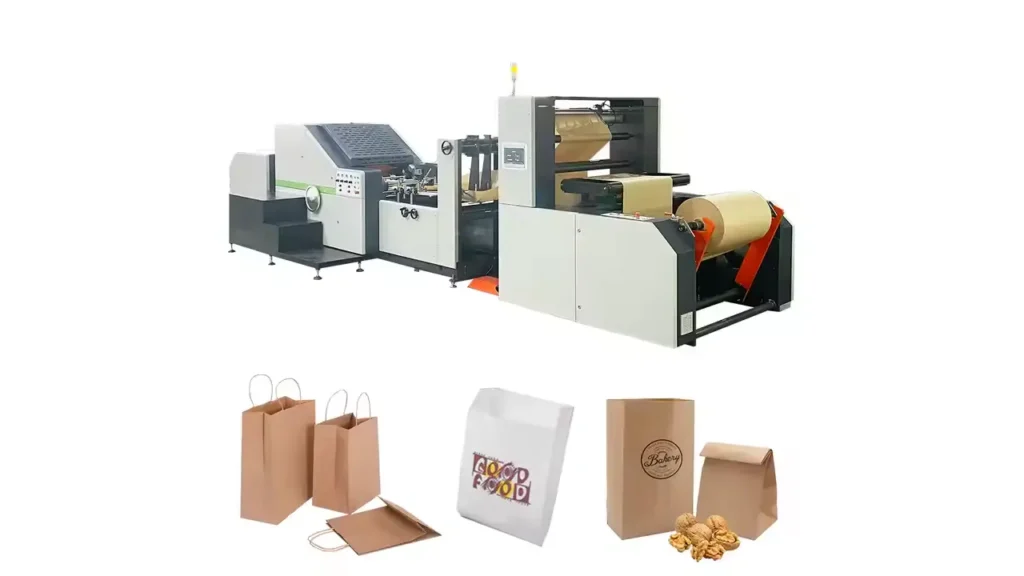
Making a kraft paper bag involves several steps, which we’ll outline below. This process ensures that the bags are durable and functional for various uses.
Step 1: Choosing the Material
First, we select the appropriate Kraft paper. The paper can be either brown or white, depending on the design preference. The weight or thickness of the paper should be selected based on the intended use—thicker paper is ideal for carrying heavier items.
Step 2: Cutting the Paper
Next, we cut the kraft paper into sheets of the desired size. The dimensions of the paper will depend on the size of the bag being made. The cutting machine is set to the desired measurements, and the paper is precisely cut.
Step 3: Forming the Bag Structure
Once the paper is cut, the next step is to fold and form the bag. The paper is folded in a specific way to create the bag’s body and bottom. A folding machine or manual labor is used to achieve the perfect creases.
Step 4: Attaching the Handles
For bags that require handles, the next step is to attach them. We typically use twisted paper or rope handles, depending on the bag’s design and intended use. The handles are securely affixed to the top of the bag with glue or staples.
Step 5: Sealing the Bag
The edges of the bag are sealed to ensure that the bag is strong and durable. This can be done using glue, heat sealing, or other methods, depending on the type of bag and its intended use.
Step 6: Final Inspection
Finally, the bags undergo a quality inspection to check for any defects or weaknesses. This ensures that the bags meet the required standards before they are shipped out for use.
How to Print on Kraft Paper Bags?
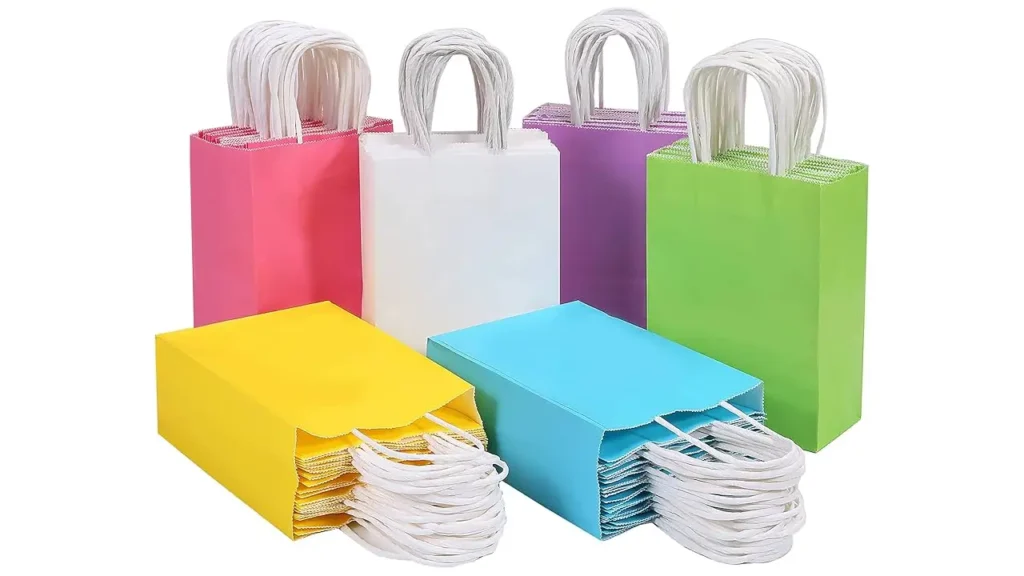
Printing on kraft paper bags is an essential step for branding and customization. Several printing methods can be used, depending on the design and requirements:
Step 1: Preparing the Design
The first step is to prepare the artwork for printing. This can include logos, branding messages, or any other design that you wish to have on the Kraft paper bag. It’s crucial to ensure that the design is high-quality and suitable for the printing method.
Step 2: Choosing the Printing Method
There are various methods of printing on kraft paper bags, including:
- Flexographic Printing: This is a popular method for printing large quantities of kraft paper bags. It uses flexible printing plates and can be done in multiple colors.
- Offset Printing: This method is often used for detailed, multi-color prints. It involves transferring the ink from a plate to a rubber blanket and then to the paper.
- Screen Printing: Ideal for small batches and large designs, screen printing uses mesh to transfer ink directly onto the bag.
- Digital Printing: This is a modern technique where the design is printed directly onto the kraft paper using digital printers.
Step 3: Printing the Bags
After the design is ready and the printing method is selected, the bags are fed into the printing machine, and the design is applied to the surface of the bags. This process can take a few minutes or several hours, depending on the complexity of the design and the quantity of bags.
Step 4: Drying and Curing
Once the print is applied, the bags must be dried or cured to ensure that the ink does not smudge. This is particularly important if using water-based inks. The bags are usually passed through a drying tunnel to speed up this process.
How to Seal Kraft Paper Bags?

Sealing stand-up kraft paper bags is essential to ensure they can hold the items inside without tearing. Here are some common methods used to seal kraft paper bags:
Step 1: Glue Sealing
This method involves applying glue to the edges of the bag to hold them together. The glue is applied with a glue gun or automated glue applicator. After applying the glue, the bag is pressed together until the adhesive sets.
Step 2: Heat Sealing
Heat sealing uses heat to bond the paper together. A heat sealer is used to melt the edges of the Kraft paper bag, fusing them together. This method is commonly used for packaging food products or items that need to be tightly sealed.
Step 3: Stapling
For kraft paper bags that don’t require a perfect seal, stapling the edges can be an effective method. It is fast and cost-effective, though not as secure as gluing or heat sealing.
Are Kraft Paper Bags Recyclable?
Yes, kraft paper bags are recyclable. Because they are made from paper, they can be recycled into new paper products.
However, the recyclability of a kraft paper bag depends on whether it has been treated with coatings or inks that make it unsuitable for recycling. Bags that are free from heavy inks or coatings are the most easily recyclable.
Conclusion
Kraft paper bags are a durable, eco-friendly, and versatile packaging solution for a wide range of applications. Whether used for gifts, shopping, or food packaging, these bags are designed to be both functional and stylish.
We hope this guide has given you a comprehensive understanding of kraft paper bags, including how they are made, printed, sealed, and recycled. If you have any questions about the content of this article, feel free to contact us.
FAQs About What is Kraft Paper Bag
Can you sublimate on kraft paper bags?
Sublimation printing is not typically suitable for kraft paper bags due to the porous texture of the paper. However, some kraft paper bags can be treated to accept sublimation prints. It’s best to consult with a printer to see if this method is feasible.
What is the difference between kraft paper and normal paper?
Kraft paper is made from unbleached wood pulp, making it stronger and more durable than regular paper. It also has a natural brown color due to the lack of bleaching.
What was the purpose of the paper bag?
The paper bag was invented as a solution for carrying items in a lightweight and durable package. It has since evolved into a common packaging solution in retail, food, and gift-giving industries.
What is kraft paper printing?
Kraft paper printing involves applying designs, logos, or branding to kraft paper bags using various printing methods, including flexographic, screen printing, and digital printing.
How long do kraft paper bags last?
Kraft paper bags are quite durable and can last a long time depending on how they are used. Properly sealed and stored bags can hold items for extended periods without degrading.
Where to buy Kraft paper bags?
You can find kraft paper bags in various sizes and designs at BN Pack. We offer a wide range of custom-made bags to suit all your packaging needs. Visit our website or contact us for more information on ordering
